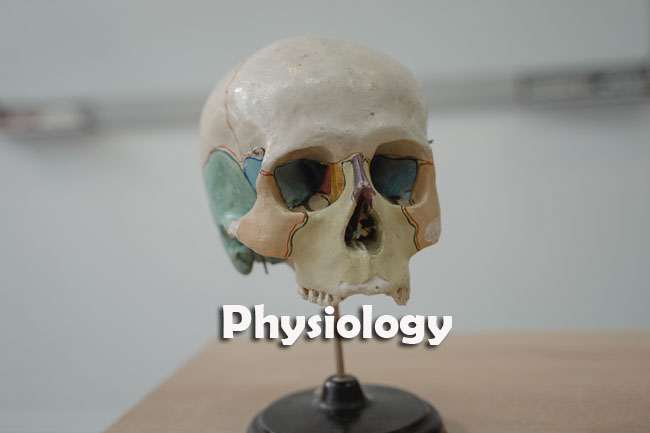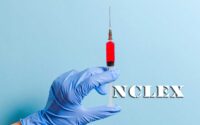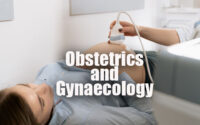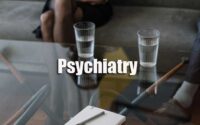HESI A2 Physiology Practice Test
Applicants can check the syllabus and exam pattern for HESI A2 Physiology exam. The HESI A2 Physiology syllabus and Exam Pattern are the important factors that you need to check before going to start your exam preparation. HESI A2 Physiology Previous Papers will be helpful for the applicants preparation.

By referring these HESI A2 Physiology Old Question Papers, you can know the exam difficulty level, asked questions, exam structure. There may be chance of repeating the questions from the HESI A2 Physiology Previous Years Papers. Download and refer the HESI A2 Physiology Sample Papers & Solved Question Papers from the below attachments.
Practice Test on Physiology for HESI A2
1) Pineal Hormone is –
A) Melanin
B) Melatonin
C) Serotonin
D) Bradykinin
2) The Hormone, causing relaxation of ligaments of pubic joints and symphysis, softening cervix, during Pregnancy, is –
A) Progesterone
B) Relaxin
C) Estrogen
D) Inhibin
3) Barr Body is-
A) Condensation of X chromosome
B) Condensation of Y chromosome
C) Condensation of Proteins
D) Condensation of Ribosomes
4) Leptin Hormone is secreted by –
A) Anterior Pituitary
B) Ovary
C) Pineal Gland
D) Fat Cells
5) Hypothalamic Prolactin Inhibiting Hormone is –
A) Adrenaline
B) Dopamine
C) Serotonin
D) Norepinephrine
6) Developing Spermatozoa acquire Motility in –
A) Epididymis
B) Vas deferens
C) Seminiferous Tubules
D) Vagina
7) Each ml of Semen normally contains about –
A) 10 million sperms
B) 20 million sperms
C) 40 million sperms
D) 100 million sperms
8) Final Maturation of the Ovarian Follicle occurs due to –
A) FSH
B) LH
C) FSH and LH
D) Activin
9) In Humans Fertilisation of the Ovum by Sperm, usually occurs in –
A) Ampulla of Uterine Tube
B) Fimbriae of Uterine Tube
C) Fundus of Uterus
D) Upper part of Cervix
10) Connection from SA node to AV node is by –
A) 1 Bundle of Atrial Fibers
B) 2 Bundles of Atrial Fibers
C) 3 Bundles of Atrial Fibers
D) 4 Bundles of Atrial Fibers
11) RMP of Myocardial Fibers is –
A) – 50 mV
B) – 90 mV
C) – 55 mV
D) – 60 mV
12) AV Nodal delay is –
A) 0.5 sec
B) 1.0 sec
C) 1.5 sec
D) 0.1 sec
13) During Inspiration, Heart Rate –
A) Increases
B) Decreases
C) Initially Decreases and then Increases
D) Remains Unchanged
14) When Conduction from Atria to Ventricle is Completely Interrupted, resulting Heart Block is –
A) 1st Degree
B) 2nd Degree
C) 3rd Degree
D) 4th Degree
15) Normally Pressure in Pulmonary Artery is –
A) Zero mm of Hg
B) 10 mm of Hg
C) 80 mm of Hg
D) 120 mm of Hg
16) Normal Ejection Fraction is –
A) 35%
B) 65%
C) 85%
D) 100%
17) Vasomotor Center is located in –
A) Medulla
B) Thoracic Segment of Spinal Cord
C) Pons
D) Midbrain
18) Increase in Peripheral Resistance is due to –
A) Constriction of Venules
B) Constriction of Capillaries
C) Constriction of Arterioles
D) Constriction of Arteries
19) Volume of Anatomic Dead Space in healthy adult male is –
A) 500 ml
B) 350 ml
C) 150 ml
D) 50 ml
20) Normal Pressure of Oxygen in Alveolar air is –
A) 100 mm Hg
B) 40 mm Hg
C) 200 mm Hg
D) 140 mm Hg
| Questions and Answers | Quiz |
| MCQs | Practice Set |
| Nursing Exam | HESI A2 |
21) Haemoglobin Molecule can combine with –
A) 1 Oxygen mol
B) 2 Oxygen mols
C) 3 Oxygen mols
D) 4 Oxygen mols
22) Myoglobin Molecule binds –
A) 1 Oxygen mol
B) 2 Oxygen mols
C) 3 Oxygen mols
D) 4 Oxygen mols
23) Carbon Dioxide Solubility in Blood is –
A) Same as Oxygen
B) 10 times greater than Oxygen
C) 20 times greater than Oxygen
D) Less than Oxygen
24) Cyanosis appears, when the Reduced Haemoglobin Concentration of Blood, in capillaries is more than –
A) 1 gm per 100 ml of Blood
B) 3 gm per 100 ml of Blood
C) 5 gm per 100 ml of Blood
D) 0.5 gm per 100 ml of Blood
25) Normal pH of Arterial Plasma is –
A) 7.40
B) 7.20
C) 7.00
D) 6.80
26) Haemoglobin has Highest Affinity for –
A) Oxygen
B) Carbon dioxide
C) Nitrogen
D) Carbon monoxide
27) Neural area for Voluntary Control of Respiration, is located in –
A) Medulla
B) Pons
C) Diencephalon
D) Cerebral Cortex
28) The stimulus for Increased Respiratory rate, after Exercise is –
A) Pressure of Carbon dioxide in blood
B) Pressure of Oxygen in blood
C) Hydrogen ion concentration of blood
D) Both pressure of Carbon dioxide and pressure of Oxygen in blood
29) Maximum number of Synapses in the Cerebral Cortex are, on –
A) Dendrites
B) Soma
C) Initial segment of Axon
D) In the middle of Axon
30) In Myasthenia Gravis, antibodies destroy –
A) Alpha receptors
B) Beta Receptors
C) Muscarinic Receptors
D) Nicotinic Receptors
31) Cold receptors are inactivated at –
A) 13 degree C
B) 17 degree C
C) 08 degree C
D) 22 degree C
32) Arousal response in EEG is indicated, by –
A) Alpha rhythm
B) Beta rhythm
C) Delta rhythm
D) Gamma rhythm
33) NREM and REM sleep cycles in a young adult are repeated at intervals of, about –
A) 30 min
B) 60 min
C) 90 min
D) 120 min
34) Normally the temperature of Scrotum is maintained at –
A) 32 degree C
B) 35 degree C
C) 37 degree C
D) 30 degree C
35) Changes in the Diameter of Pupil, can vary the amount of Light reaching Retina, by –
A) 2 folds
B) 3 folds
C) 4 folds
D) 5 folds
36) The distance at which the subject reads the Snellen Chart, is –
A) 20 ft
B) 15 ft
C) 10 ft
D) 05 ft
37) Rotational Acceleration is detected by receptors present, in –
A) Saccule
B) Utricle
C) Semicircular canals
D) Cochlea
38) Endolymph has high concentration of –
A) Na ion
B) K ion
C) Ca ion
D) Cl ion
39) Olfactory Receptors Neurons have an average Lifespan of –
A) 365 days
B) 300 days
C) 250 days
D) 50 days
40) Neurogenesis of Olfactory receptor neurons occurs, from/ by
A) Basal cells
B) Supporting cells
C) Bowman’s Gland
D) Division of Olfactory Receptors
41) The Thermo regulatory integration and Control Center is located in –
A) Olivary nucleus
B) Nucleus Tractus Solitarius
C) Pre optic area
D) Area Postrema
42) Which of the following Hormone decreases with Aerobic Exercise –
A) Catecholamines
B) Cortisol
C) Glucagon
D) Insulin
43) As per Research, practising Yoga –
A) Provides Physical Health benefits
B) Provides Mental Health benefits
C) Provides both Physical and Mental Health benefits
D) Has no Health benefits
44) Meditation induces –
A) Relaxation response
B) Stress response
C) Sleep response
D) Arousal response
45) Some types of Meditation works by –
A) Reducing activity of sympathetic nervous system & increasing activity of parasympathetic nervous system
B) Reducing activity of parasympathetic nervous system & increasing activity of sympathetic nervous system
C) No effect on sympathetic nervous system & increasing activity of parasympathetic nervous system
D) No effect on parasympathetic nervous system & increasing activity of sympathetic nervous system
46) The number of Ventricles in Brain are –
A) 2
B) 3
C) 4
D) 5
47) Cerebrospinal fluid pressure, is normally within a range of –
A) 70.5 to 110.5 mm of Hg
B) 4.5 to 14.5 mm of Hg
C) 10.5 to 25.5 mm of Hg
D) 30.5 to 60.5 mm of Hg
48) Biological Clock is present at –
A) Arcuate nucleus
B) Mammillary nucleus
C) Paraventricular nucleus
D) Suprachiasmatic nucleus
49) Surfactant is produced by –
A) Type II alveolar epithelial cells
B) Type I alveolar epithelial cells
C) Pulmonary alveolar macrophages
D) Neuroendocrine cells



